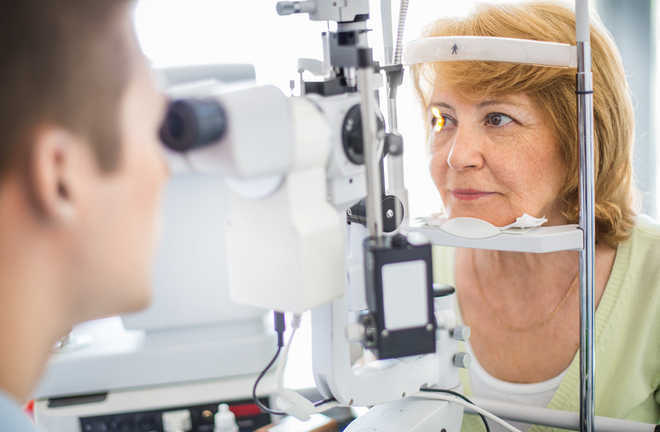
Photo for representational purpose only.
New York
A simple eye examination may help accurately diagnose a progressive neurodegenerative condition called frontotemporal degeneration, scientists have found.
Frontotemporal degeneration (FTD) is among the most common causes of midlife dementia, and is often misdiagnosed as Alzheimer's - or vice versa.
Researchers at University of Pennsylvania in the US using an inexpensive, non-invasive, eye-imaging technique found that patients with FTD showed thinning of the outer retina - the layers with the photoreceptors through which we see - compared to control subjects.
The retina is potentially affected by neurodegenerative disorders because it is a projection of the brain.
Prior studies have found a loss of optic nerve fibbers and associated thinning of the inner retina in a few other neurodegenerative disorders including Alzheimer's, ALS, and Lewy-body dementia.
The new results suggest that FTD manifests in a different way in the structures of the retina, and that this difference, detectable with a retinal imaging test, might help doctors distinguish one disorder from another.
"Our finding of outer retina thinning in this carefully designed study suggests that specific brain pathologies may be mirrored by specific retinal abnormalities," said Benjamin Kim, assistant professor at University of Pennsylvania.
The study included 38 FTD patients and 44 control subjects who did not have any neurodegenerative disease. The FTD patients were carefully characterised with clinical exams, cerebrospinal fluid biomarkers to exclude Alzheimer's Disease, and genetic testing.
The researchers then employed an eye-imaging technology called spectral-domain optical coherence tomography (SD-OCT), which uses a safe light beam to image tissue with micron-level resolution. SD-OCT imaging is inexpensive, non-invasive, and quick.
Measurements of the retinal layers of the participants, after adjustments for age, gender, and ethnic background, showed that the outer retinas of the FTD patients were thinner than those in the control participants, researchers said.
This relative thinning of outer retinas was caused by a thinning of two specific portions of the outer retina, the outer nuclear layer (ONL) and ellipsoid zone (EZ).
The outer nuclear layer of FTD patients was about 10 per cent thinner than controls, and this ONL thinning was the primary source of the outer retina thinning, they added.
The study was published in the journal Neurology. —PTI


























